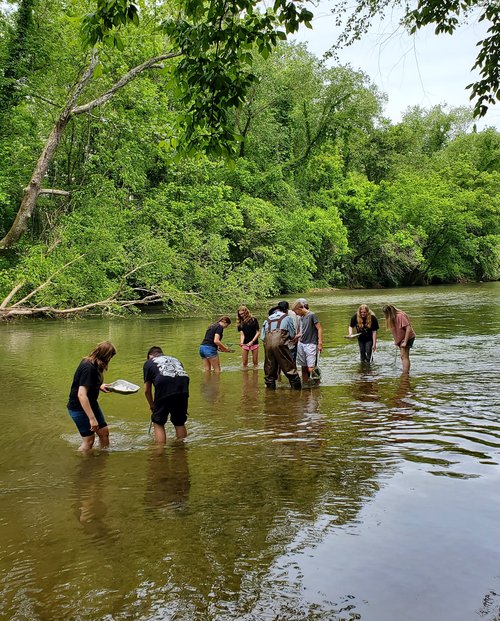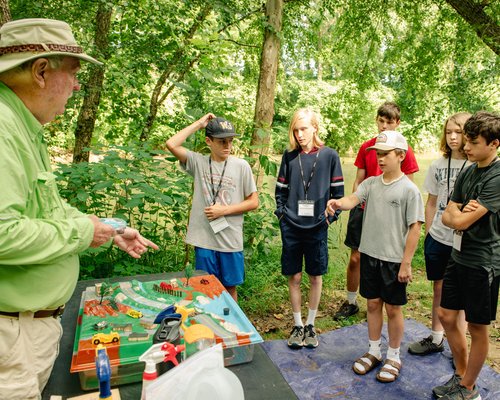Kids in the Creek
Environmental Education

Since the program began in 2011, LJEA’s Kids in the Creek program has grown to reach over 1200 students from McDowell and Burke County annually. The program was developed to expand on NC’s science curriculum, exploring topics related to water quality, the hydrologic cycle, aquatic habitats, and our roles in protecting and maintaining a healthy aquatic ecosystem. Both teachers and volunteers report that Kids in the Creek has successfully boosted learning outside of the classroom through student engagement with the natural environment, and most importantly, the enthusiasm students bring to expanding their education.
Kids in the Creek is a two-day program consisting of one day in the classroom and one day “in the creek.” In the classroom, students engage with models, posters, literature, and maps to learn about watersheds, the interactions between surface and ground water, water pollution, and stormwater runoff. "In the creek” sessions are held at a local waterway. Students rotate between three stations learning about macroinvertebrates, performing stream and habitat assessments, and examining the chemical and physical properties of water. Students experience hands on learning and get to have fun in the water!
This program would not be successful without our volunteers. Volunteers contribute over 500 hours of time to the program every year. LJEA purchases and maintains the models, equipment, posters and other supplies needed. You can help LJEA sustain and expand the program by volunteering or making a financial contribution. Please visit our Volunteer with LJEA page for more information on how you can get involved!
